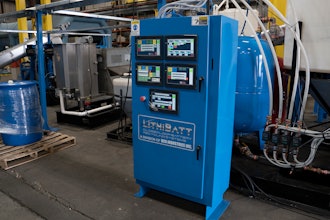SAN FRANCISCO (AP) -- California is poised to formally adopt the nation's most comprehensive so-called "cap-and-trade" system, designed to provide a financial incentive for polluters to reduce greenhouse gas emissions.
State officials hope other states and Washington D.C. will follow suit with similar plans.
"When Washington considers how to address climate change, as I think it will, California's climate plan will serve as a role model for the national program," said Stanley Young, the air board's spokesman.
The California Air Resources Board on Thursday is expected to approve the final draft of its plan, a key part of the state's landmark 2006 global warming law, AB 32, which seeks to reduce the emissions to 1990 levels by 2020.
Some businesses regulated under the program argue it will hurt job creation by raising the cost of doing business in the state, and increase the price of electricity for consumers. But the program's supporters expect cap and trade to spur economic recovery and innovation, by pushing business to invest in clean technologies.
Starting in 2013, the plan places emissions allowances on power plants and other of the worst polluting facilities, with others joining in 2015. In total, the plan will cover 85 percent of California's emissions.
In general, the program will require pollution producers like refineries and cement manufacturers to buy permits, called allowances, from the state. Each permit allows for a specified amount of greenhouse gases each year, and will decline over time.
The permits can then be sold in a marketplace by companies who cut emissions and have extra allowances; or bought by greenhouse gas emitters who need to purchase more allowances because they failed to cut emissions.
Polluters could even turn a profit if the marketplace sets a price above the initial cost of the permit.
Also, a company can meet up to 8 percent of its emissions reduction obligations by purchasing carbon "offsets," or investments in forestry or other projects that reduce greenhouse gases.
To help companies prepare for the program, 90 percent of the allowances would be free in the first years, providing time for equipment upgrades.
Some of the regulated industries see the 10 percent they will have to buy at first as a new tax, and oppose the board's current plan.
"We are very concerned about the negative impacts the policy may have on the state's economy, jobs picture and energy costs," said Catherine Reheis-Boyd, president of the Western State Petroleum Association, in a statement.
"This policy, if adopted, will amount to a new tax on refiners and other energy intensive industries that could total billions of dollars over several years."
Any electricity price increases would have to be pre-approved by the state.
The cap-and-trade plan has seen a number of changes since it was first adopted with fanfare in Sacramento last year. Work was briefly halted by a judge after environmental justice groups sued, arguing that cap and trade's market would allow polluters to buy the right to pollute more by purchasing more allowances. This, they argued, would affect mostly low-income neighborhoods located near governed facilities.
The California Supreme Court in September ruled to allow work to continue on the regulations.
In response to the concerns about localized pollution increases, the board will vote Thursday on whether to adopt a new management plan, under which the air quality near power plants and other regulated facilities will be monitored by the board to see if any more pollution results from cap-and-trade.
"If so, we will take action to respond to those changes," Young said.






















